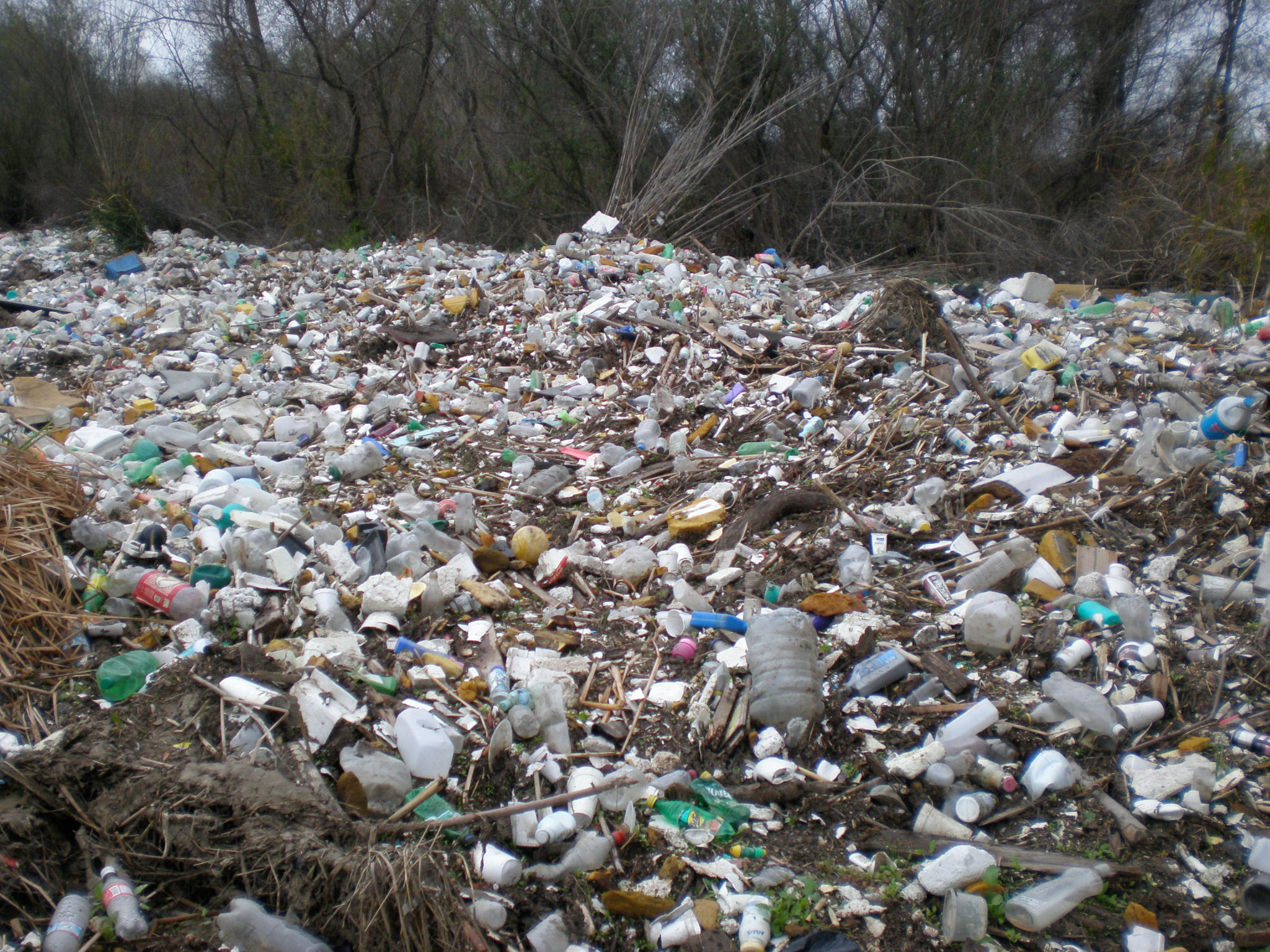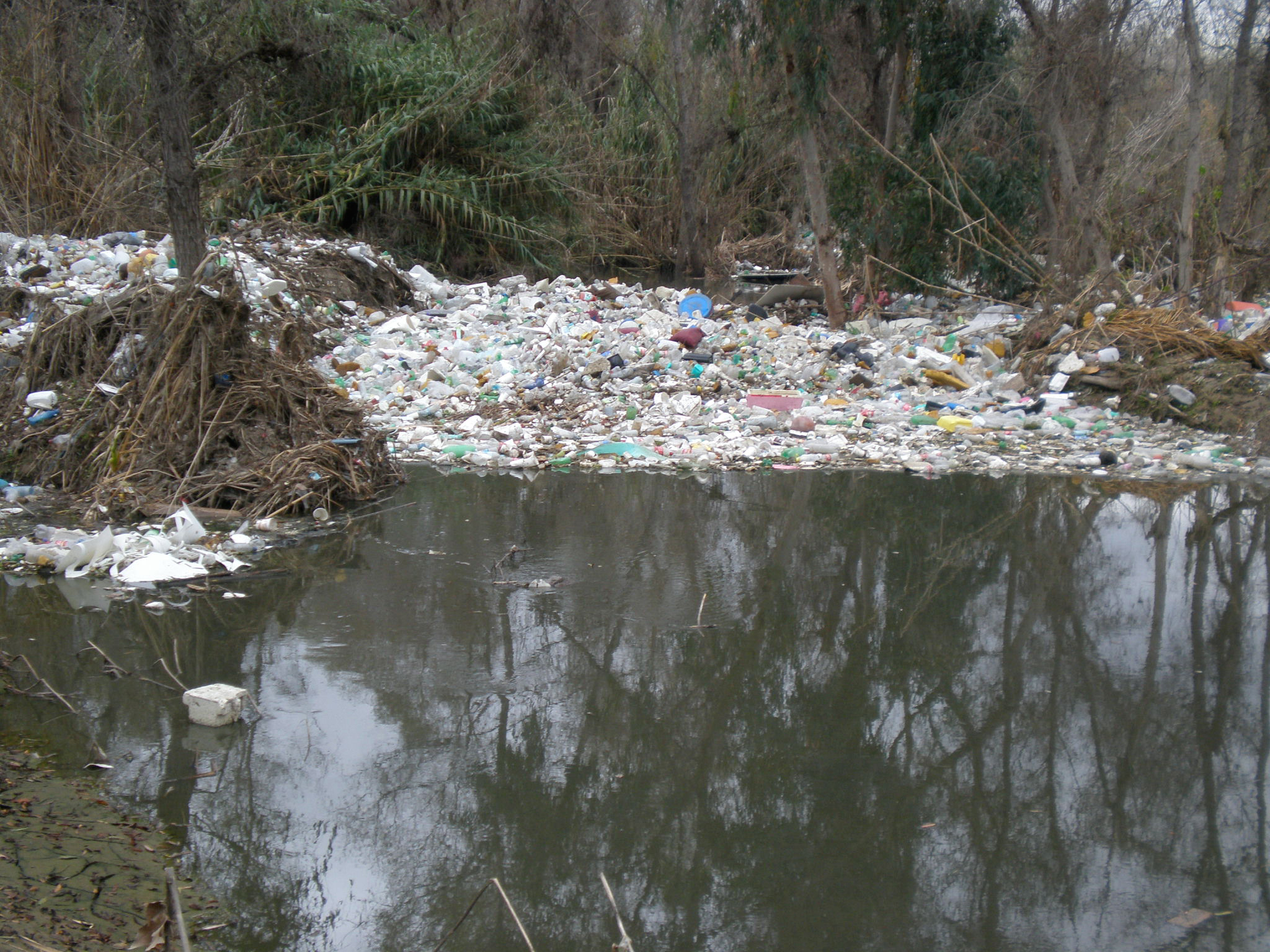stream/download this segment as an MP3 file

Plastic debris in the Tijuana River Valley in San Diego (photo: Chelsea Rochman)
Transcript
CURWOOD: Every year, humans produce nearly 280 million tons of plastic. And much of that plastic ends up in the environment, harming marine life and other ecosystems. Now a group of scientists has a potential solution. Writing in Nature magazine, they argue that reclassifying plastics as hazardous waste would give regulators more tools and funding to clean the place up. One of the authors, Chelsea Rochman, a marine ecologist at the University of California at Davis, says it’s clear that plastics need a new label.ROCHMAN: Waste is basically separated into two categories, those that are non-hazardous like grass clippings, and those that are considered a hazard, which are often based upon this long list of priority pollutants, or substances that the government deems are hazardous to organisms. And we found that plastics are associated with 78 percent of these priority pollutants listed by the US EPA and 61 percent listed by the European Union, either as a chemical ingredient of the plastic itself or when the plastic ends up in the aquatic environment; they absorb these contaminants from the water. And so from that perspective we thought maybe plastic as a waste product should also be considered as a hazardous substance.
CURWOOD: What's the danger?
ROCHMAN: We don't know an awful lot about the ecological hazards of plastics themselves. But we know a lot about the hazards associated with these priority pollutants. There's a vast amount of peer-reviewed literature on this. And so we know that these priority pollutants, when they get into food webs and into ecosystems, that they can cause harm at organism level, population level and so we’re concerned that if these plastics are another vessel for these priority pollutants to be getting into habitat, that they also may cause harm.
CURWOOD: Quickly, list for me the priority pollutants.

Chelsea Rochman looking for plastic at sea (photo: Stiv Wilson)
CURWOOD: So what are you recommending?
ROCHMAN: So what we’re recommending is to start off with a policy change that will enable a domino effect. So what we’re expecting first is that if we consider these plastics as a hazardous substance or hazardous once they end up in the environment, certain policies like in the US, for instance, CERCLA or Superfund, would be able to actually use funding to go in there and clean it up. So, for example, let's take the Hawaiian Islands where a lot of the plastic from the middle of the gyres, of the garbage patches are washing up. And so we know there’s large accumulations of plastic items on the beaches there. If plastics are considered a hazardous substance, the EPA then has legislation to go in and clean up that area and use funding and litigation to prevent further debris from accumulating.
CURWOOD: Let’s talk some numbers of plastics. How much plastic do we produce every year, and how much of it is not taken care of?
ROCHMAN: So at the moment, in 2011, we produced 280 million tons of plastic, and that’s globally. That same year, the World Bank reported that they collected in the waste stream, so they accounted for either in landfills or recycling, 130 million tons of plastic. So that leaves 150 million tons unaccounted for. Now obviously, some of that plastic is still on our feet as shoes or on our computers, in our houses, but not all of it can still be in use. So if you wonder where is that 150 million tons of plastic...and so we know there’s large accumulations in the environment. So I think that's troublesome because how much are we adding every year, and that’s the question we don’t know the answer to yet.
CURWOOD: Where is this worst? What ecosystems are being threatened by this?

More plastic debris in the Tijuana River Valley (photo: Chelsea Rochman)
CURWOOD: So you remember famously in the movie The Graduate, Dustin Hoffman is told, “Plastics, young man, plastics.” So what would we tell Dustin Hoffman today, his character? What would we replace plastic with?
ROCHMAN: I am so happy that you asked that question. It used to be how we began and ended the paper. So there’s a famous line in that movie that says, “plastics are the future”, right, or “the future is plastics”? And I would say that that’s not necessarily untrue. I still think there is a great future in plastics. And I don’t think plastics are evil and that we should ban them all, but I think we should start thinking about making plastic materials that are benign by design, and use our innovation strategies to make products that are recyclable, reusable and durable, and that are safe for people and the planet.
CURWOOD: Chelsea Rochman is a marine ecologist who studies toxicology at the University of California at Davis. Thank you so much.
ROCHMAN: Thank you.
No comments:
Post a Comment
Note: Only a member of this blog may post a comment.